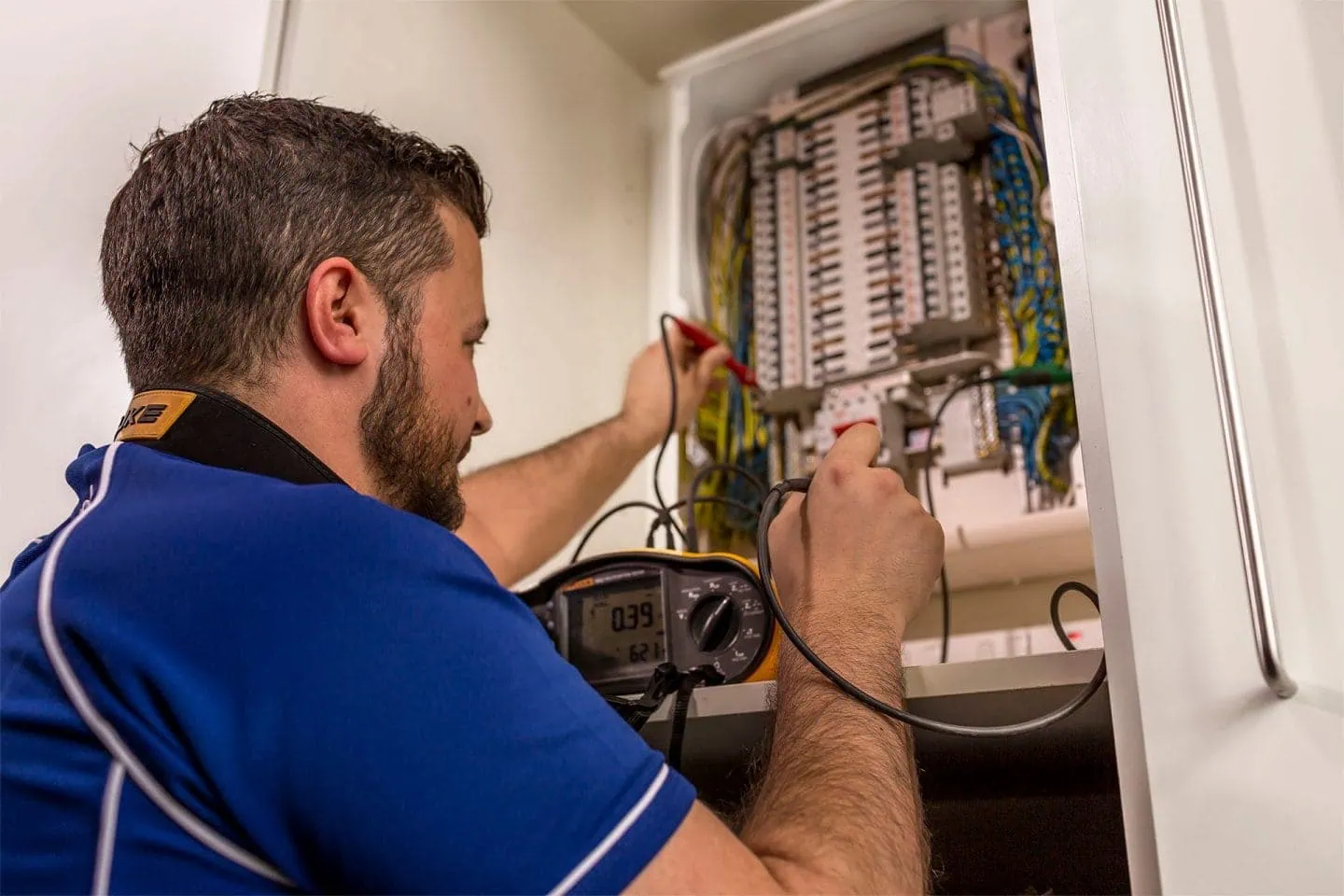How to get an electrical safety test certificate: what is an EICR?
If you rarely think about electrical systems, you’re not alone. As they say: out of sight, out of mind. This means you’re less likely to consider the effects of potential damage or wear and tear until you’re looking to get an electrical safety test certificate or a fault has already occurred.
All fixed wire electrical installations, i.e. electrical cables within a building that sit behind outlets, such as sockets and light fittings, degrade with time. Just because there doesn’t appear to be any issues, doesn’t mean that they’re not there.
It’s not just a safety issue, either. Landlords are required to have a valid electrical safety test certificate when renting out their properties. To get this, an Electrical Installation Condition Report (EICR) must be done.
We’ve broken down what you need to know about what an EICR is, who needs to have one and how frequently. As well as what you can expect from the process.

What is an Electrical Installation Condition Report?
An Electrical Installation Condition Report, or EICR, is the electrical safety test that is carried out on the fixed wire installation in a property. These inspection reports are the only way of a fixed wire installation being properly checked and certified as being safe. Items that plug into sockets are safety tested with Portable Appliance Testing (PAT).
An EICR must be done by a qualified and competent electrician registered with a recognised scheme provider, such as NICEIC or NAPIT.
These professionals have the necessary expertise to conduct an in-depth inspection. They will detect any problems, as well as offer guidance on any remedial action that may be necessary.
After the condition of the electrical installation has been inspected and tested, an electrical safety test certificate is issued. This provides written confirmation that the property has had the necessary inspections and tests. When the certificate is issued, it will either confirm that the electrical installation is safe, or it will highlight any issues that need to be rectified to ensure electrical safety.
Components reported in an Electrical Installation Condition Report include:
- Consumer units (fuse box/board)
- Protective bonding
- Lighting
- Switches
- Sockets
Book an EICR

Our electricians can conduct an EICR inspection in any residential or commercial property.
- Rates start from £135.00 + VAT for residential
- Rates start from £360.00 + VAT for residential
- Report shared within 2 working days
- Fixed pricing for planned work
What to expect during an EICR
When a testing electrician performs an EICR, they will check the electrical installation condition based on the standards set by the IET’s – the body that oversees British safety standards for electrics – Wiring Regulations (BS 7671).
The power to each circuit will be turned off for a short time to take readings – this process is known as “dead testing”.
Next comes “live testing”, which checks the condition of the components and makes sure the system will disconnect quickly in case of a fault.
Your electrician visually and physically inspects the consumer unit (commonly referred to as a “fuse board”), wiring, plug sockets, lights and other essential fixtures for signs of safety risk. They will physically test a percentage of outlets on each circuit. If they find electrical faults, they will test more.
A residential EICR will typically last from one to four hours, however this depends on factors such as the property’s size, the ease of accessing the electrics that need testing, and the number circuits to be tested. Allow up to 30 minutes per circuit in large properties.
If information on the installation is made available to the testing electrician before starting the EICR, it will make their job quicker, too. This is why you should always keep a copy of a previous EICR to share when it’s time for a new electrical safety test.
Why getting an EICR done is important
An EICR is what you need to get an electrical safety test certificate. It ensures that anyone living or working in a property, and the property itself is safe from electrical hazards and the risk of electrical shock and fire.
In the private rental sector, failure to obtain a valid electrical safety certificate can lead to fines of up to £30,000. If faults are recorded on the test certificate, and aren’t fixed, local authorities could also issue notices and arrange for remedial work to be done.
Additionally, property owners are accountable for ensuring the safety of their electrical installations. If a homeowner’s electrical system causes damage, such as a fire, to a neighbouring property, the homeowner could be liable for the damage.
Furthermore, if it’s found that poor electrical installation led to the damage, and the homeowner does not have a valid EICR, insurance providers could reject the claim.
Tip: some people believe that a single inspection is sufficient for the lifetime of a property. However, all electrical installations degrade over time and can produce potential danger. Regular electrical inspection is therefore needed to ensure they remain safe and compliant with regulations.
How long does an EICR last?
For rental properties, there’s a legal requirement for an electrical safety test to be carried out every five years. For homeowners, there are no legal requirements on how often you should have an EICR done. However, our electricians advise that everyone should get one every five years.
N.B. We recommend checking with your insurance provider, as they might have specific requirements as to how often you need to have an electrical safety test.
If significant changes to the property have occurred, you should obtain another electrical safety report. This includes: a high rate of tenant turnover, extensive DIY work, signs of rodents, or any water damage.
How should I prepare for an EICR?
To ensure a smooth EICR inspection experience, property owners should:
- Hire a qualified electrician with experience in conducting electrical safety tests
- Learn which electrical safety regulations apply to them
- Understand any insurance cover responsibilities as policy owners
- Have a copy of a previous EICR to share with the electrician, if available
- Be prepared to take action to get any faults corrected if they’re identified
Making sure that the entire building is accessible will also contribute to a smooth inspection process. This includes loft spaces, cupboards, and outbuildings. Furniture may also need to be moved to access electrical outlets.
When the electrical safety test certificate is issued, property owners should communicate with the electrical engineer. Make sure to ask questions and seek explanations for anything that is unclear.
Take charge of your home’s electrical safety
Here at Aspect, we’re on hand to answer any EICR or electrical safety questions you have.
All of our electricians are fully certified. They can perform EICRs and get started straight away on remedial work that’s needed, based on fixed price quotes.
Areas we cover

As a guide, we offer a comprehensive range of electrical services throughout Greater London and the Home Counties. Our service area includes Berkshire, Buckinghamshire, Essex, Hertfordshire, Kent, and Surrey.
If you need an electrician outside of this coverage area, we may still be able to help. Our team will check availability and see if an expert can be scheduled for your location.
Call or submit a callback request, and a member of our team will be in touch with you.
Was this article helpful?
Think we could improve this article? Please let us know